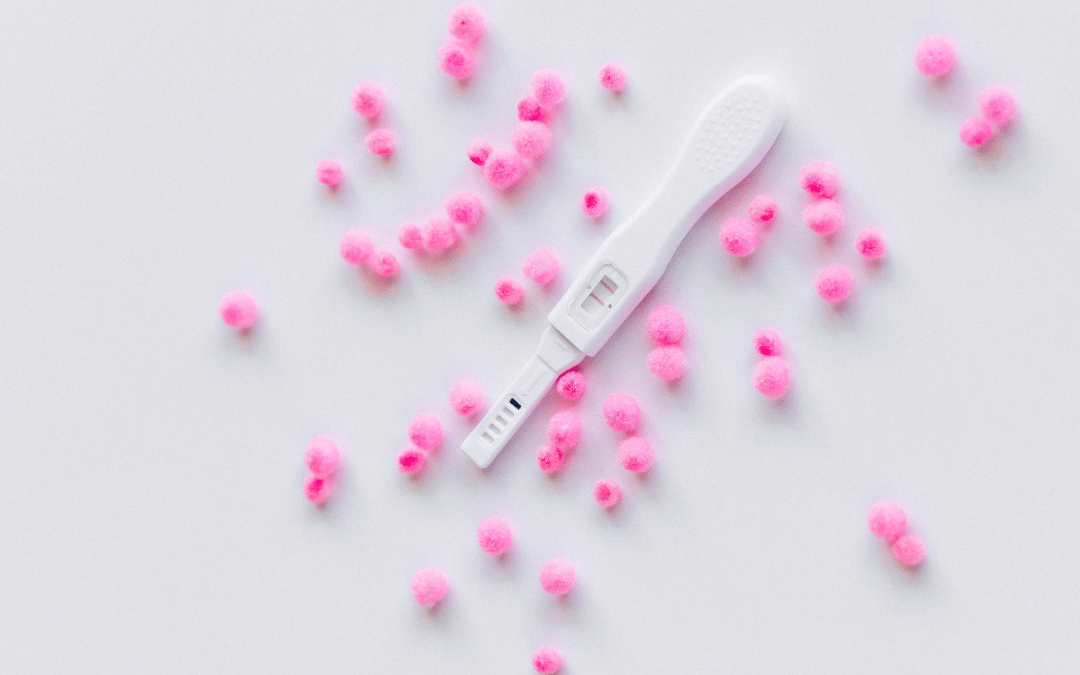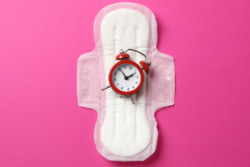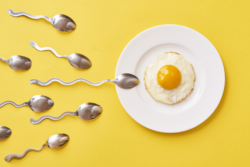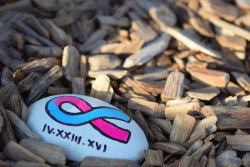Many people assume that endometriosis (endo) means infertility; that if you have endometriosis, it automatically means you’ll struggle to get pregnant. The truth is that endo comes with a lot of challenges for reproduction, but you can still have a healthy pregnancy — it just may take a bit of work.
The other thing to remember is that endometriosis doesn’t end when you get pregnant. This isn’t a disorder that magically just disappears. It’s hormone and immune system driven.
Symptoms of endometriosis are much different before, during, and after pregnancy.
During pregnancy, the increase in hormones and a lack of cycling often suppress symptoms. It causes the lesions—those “cysts” of endometrial (uterine) tissue that have migrated away from the uterus to the pelvic and abdominal areas—to stop growing.
At least this is how my OB/GYN explained it. After I was diagnosed with endometriosis, she said my two options to suppress the disorder were to get pregnant right away and keep getting pregnant, or to use a progestin-only IUD (an intrauterine birth control device).
My Endometriosis Diagnosis
I was 31 years old when I was formally diagnosed. My periods had always been painful, with a heating pad and ibuprofen being my monthly buddies. But things were better in my late 20s since I had been off the birth control pill. My moods were better, my weight was steadily becoming healthier. I never thought I had cysts or a “real” problem.
But cramping, pain, and now discomfort with ovulation were present in every cycle. There was one cycle in particular, months before I would see a specialist. I was working in a medical building pharmacy when the pain was so intense that I became lightheaded and was sweating head to toe. I ran to the bathroom, trying not to vomit and collapse on the floor.
It was lucky that this first major attack happened in a medical building. Within two hours, I had an ultrasound and had been seen by a medical doctor. What they found was the first identifiable cyst of what would become a more invasive form of the disorder. The lesion was 5x7cm, consistent with an endometrioma.
Within a few months, there were two lesions, and the first had grown. Knowing that my partner and I wanted to try for a baby in the next year or two, I booked the surgery to have them all removed before trying to conceive (and hoping to have less pain!).
Of course, ultrasounds can only show us so much. My surgeon explained to me that while she was in there (laparoscopically) there were many other little lesions in addition to the ones on my right ovary, while my left ovary was tethered down by adhesions and was immobile. I had also checked my AMH levels before surgery, to make sure I wouldn’t be risking of having an already low egg reserve (I was lucky and had a good AMH).
Around this time, just before my referral to the OB/GYN specialist, I started seeing the best naturopathic doctor I knew in reproductive health (and yes; she was a Conceive Health ND). I know you’re probably thinking, but you’re an ND yourself! The truth is it’s hard to treat yourself sometimes. You know too much, and it can be better to have someone else in charge of putting together a plan of action for you.
So that’s what I did, and it came with a good list of supplements including a 3-capsule prenatal, anti-inflammatories like resveratrol, n-acetyl cysteine, curcumin, omega-3 fish oil, and more.
Naturopathic Care for Endometriosis
I know it’s a lot—the number of capsules and supplements that come with many fertility-optimizing plans. It’s intimidating, and it’s difficult trying to remember to take them all. It’s also not cheap. Good quality supplements go through more frequent and/or vigorous testing for purity, which, besides better quality source ingredients, can drive prices up. But that said, the impact they can have is dramatic and can be worth every dollar.
I kept up with a regular supplement regime before getting pregnant. If you’re curious, I did a more intense “preconception health plan” with my ND for about four months before trying to conceive, and then it took four cycles of trying before I got my positive.
As soon as I had confirmation of pregnancy, I was ecstatic! And I was looking forward to nine months or more of no periods or cycles. But at around 5-6 weeks pregnancy my pain came back. It was blinding and I could barely stand. I was panicked, thinking I was having an ectopic pregnancy. After 36 hours of being in bed or on the couch, clutching my abdomen (the pain was reaching to my ribcage), and unsure about what I could take for the pain, my mom took me to the emergency room.
It turns out this was the last hurrah of my endometriosis before the pregnancy hormones would be strong enough to suppress whatever lesions were crouched and hiding in my body. It wasn’t an ectopic pregnancy. It was my endometriosis flipping me the bird before disappearing for a while.
There was a time postpartum when I stopped taking a lot of my supplements. I should mention that the rest of my pregnancy was healthy and uncomplicated and (after 31 hours of labour) I delivered a healthy baby girl. Postpartum I was more worried about my mood and energy, so I continued my prenatal and vitamin D regularly, but I really fell off the wagon with most my supplements.
When my periods returned, they weren’t bad at all! But over time, I started noticing that my flow was getting heavier and the pain both with menstruation and with ovulation was getting more intense, or would fluctuate.
About a year after my postpartum periods had returned, I slipped right back into a full-blown endometriosis attack. It was cycle day two, and the pain had stretched from my uterus up toward my rib cage, and all down my sides. I was plagued by nausea and vomiting throughout the night, and during the day my blood pressure dropped, nearly sending me fainting to the floor.
It was four days of hell, of being in intense pain, not being able to work or eat, trying to stave off dehydration, taking the maximum allowed amount of ibuprofen, and having a heating pad on my belly for hours at a time. This was three months ago.
I decided right then I wouldn’t go through this again. I ran bloodwork on myself and found my B12 and iron were low. I took out my weekly pill organizer and started sorting and organizing my supplements. I knew this was going to be a lot. I already need to take five capsules with my meals just to digest and not have reactions to food.
Then I added this:
- 2 tsp of liquid Omega-3 fish oil containing about 4g of EPA
- 1 capsule Heme Iron, 11mg
- 2 capsules N-acetyl cysteine, 1800mg
- 2 capsules Longvida curcumin, 250mg
- 1 capsule or chewable Probiotic
- 1 capsule Resveratrol, 100mg
- 3 capsules Prenatal with full B-complex and additional 30mg iron
- 2 capsules of an estrogen-modulating complex containing DIM, broccoli extract with SGS, Hops, and calcium d-glucarate.
- 2 tbsp liquid Calcium-Magnesium Citrates, 1000mg calcium + 400mg magnesium
- 4000IU Vitamin D
- 2 sprays of methylcobalamin B12 spray, 2000mcg
- Additional 500mg powdered magnesium mixed into water (which also ensured I got a minimum of 1.2L of water per day)
EVERY SINGLE DAY.
Yeah, it’s a lot. But within four weeks, when my next period came, the difference in experience was so dramatic and incredible, I knew my efforts weren’t for nothing. Not only did I have minimal discomfort — not even what I would consider “pain” — but my flow lightened significantly. Where previously I would have to change my menstrual underwear at least 3 times during the day, this time around it wasn’t even a thought. I went for a 7km long run on day two and felt amazing (I even did another 5km on day three). Nausea, vomiting, weakness, pain… it was all gone. Like the previous cycle had just been a bad dream (nightmare, more like it).
The Silver Lining
The point I’m trying to make here is that yes, everything you might have to do can be overwhelming at first. It’s a lot to keep track of. I drink water like it’s my job. I take my supplements as my body depends on them. I only use fragrance-free, natural, vegan… etc. body products. I refrain from ordering pizza and instead stick to my organic whole-food diet because I know how much better I feel when I’m on it. My skin is clearer (which easily can be overtaken by sugar-induced acne and histamine-induced rashes and hives), my bowels are more regular and less inflammatory, and my cycles are manageable.
Endometriosis isn’t the end of the fertility line. It’s a wake-up call that there are major issues with inflammation, the function of the immune system, over-active estrogens, and sluggish liver detoxification pathways.
But there are solutions. There are treatments. If you can do the work, it will make a difference. I’m here to tell you that you are not alone. When we prescribe a dozen supplements or have you taking 20 different capsules a day—I see you. And I’m doing it all with you.
To learn more about how you can support your fertility with preconception care, or to book an online appointment with a Conceive Health ND, contact us today.









